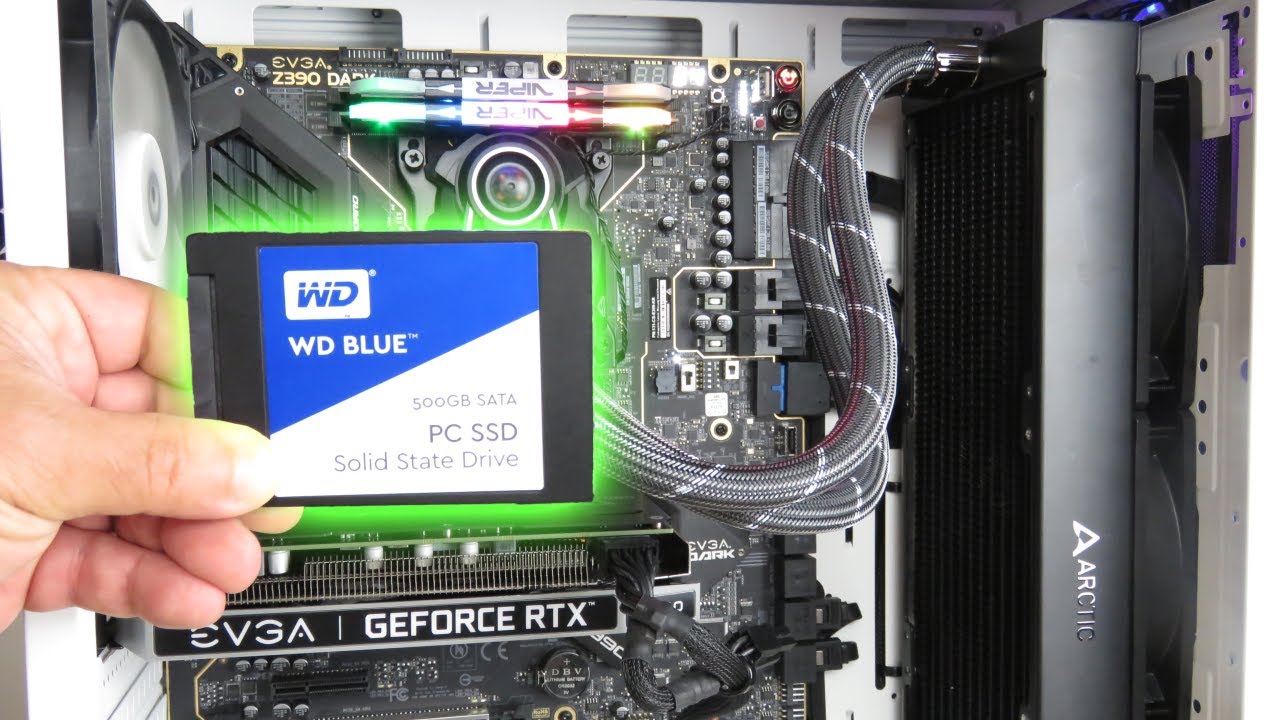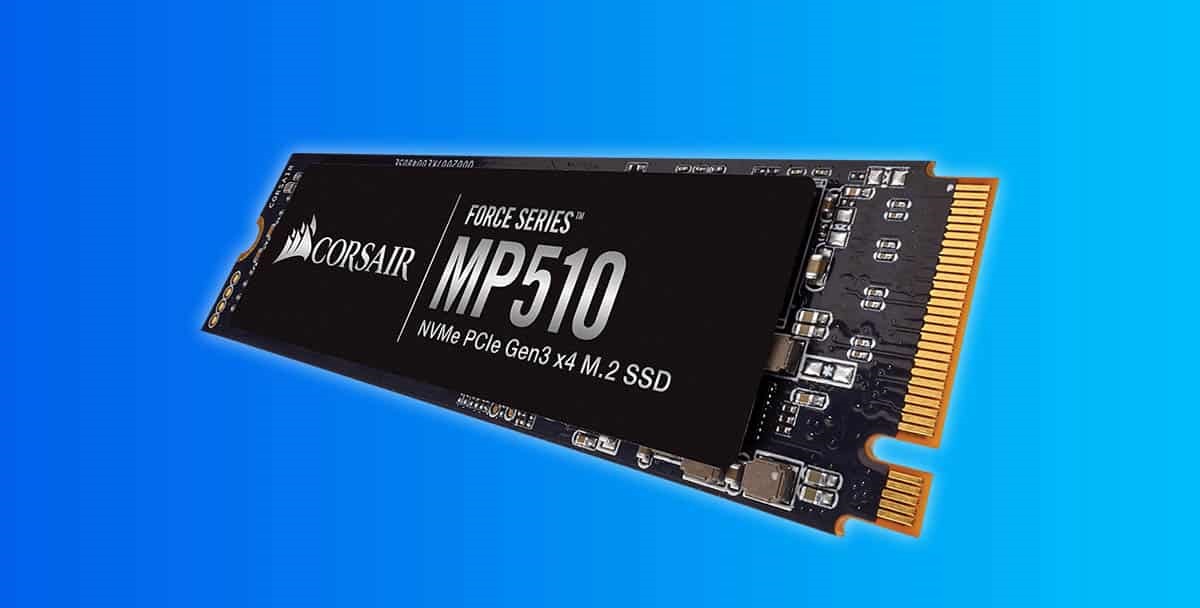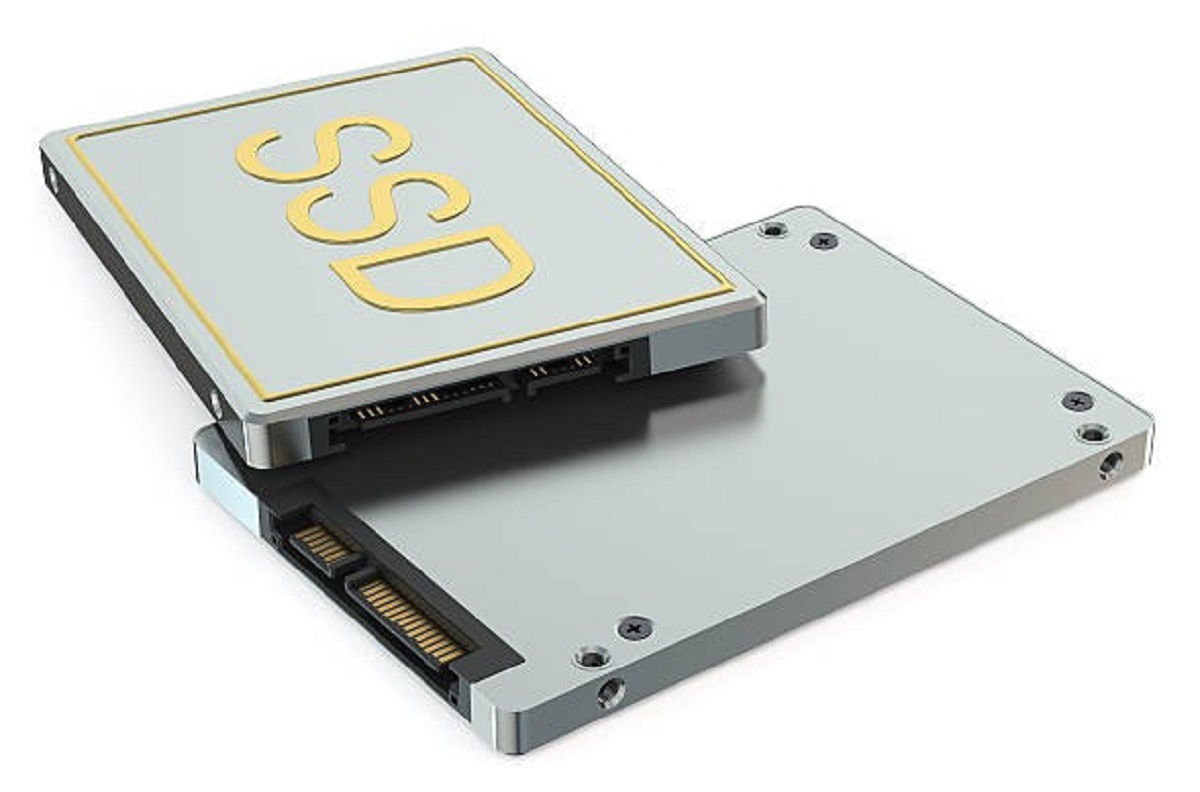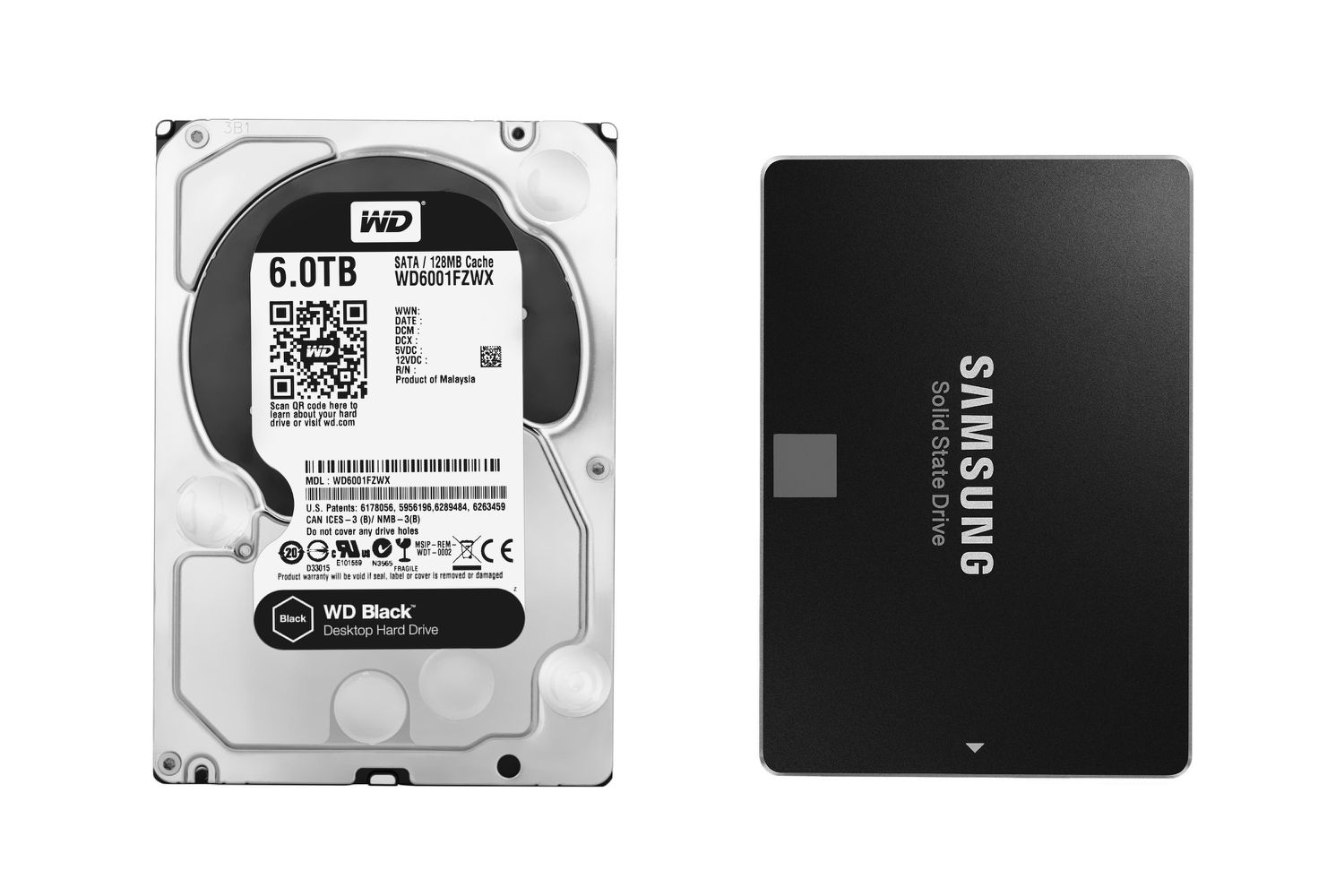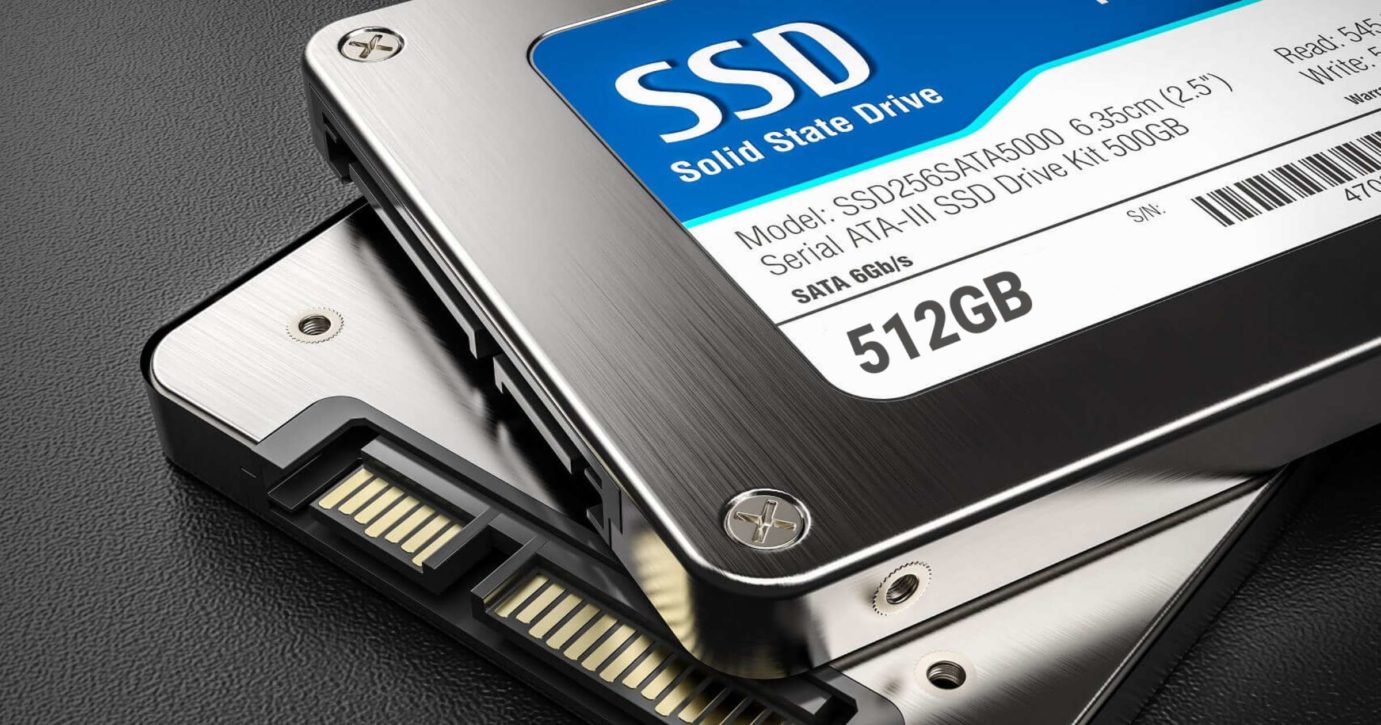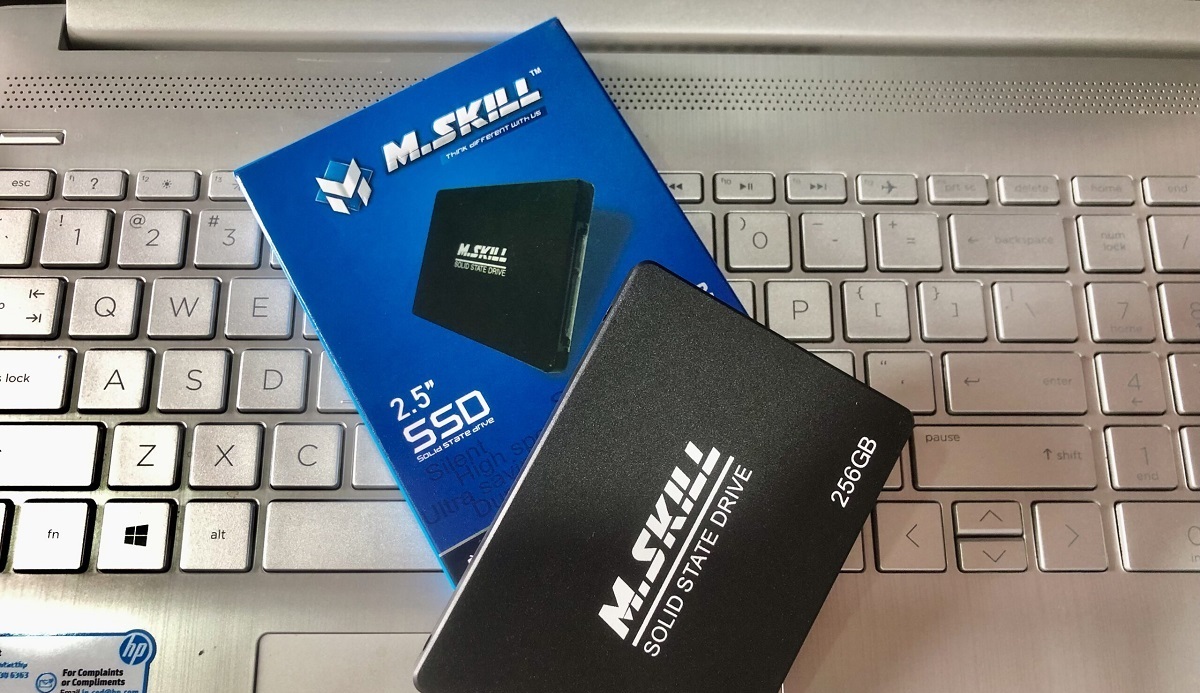Introduction
Welcome to the world of solid-state drives (SSDs), where data storage has been transformed and accelerated. In today’s fast-paced digital age, the need for faster and more efficient data storage solutions has become paramount. Traditional hard disk drives (HDDs), with their spinning platters and mechanical read/write heads, are being gradually replaced by the sleek and reliable SSDs.
An SSD is a type of non-volatile storage device that uses solid-state memory to store and retrieve data. Unlike HDDs, which rely on magnetic media, SSDs use flash memory technology. This makes them faster, more durable, and less prone to mechanical failure. With no moving parts, SSDs can access data in a flash, providing faster boot times, quicker application launches, and significant improvements in overall system performance.
Understanding how data is stored on an SSD requires a closer look at the underlying architecture and organization of these advanced storage devices. Through sophisticated algorithms and technologies, SSDs optimize data placement and distribution to ensure efficient access and safeguard against data corruption.
In this article, we will explore how data is stored on an SSD, delving into the fascinating world of cells, pages, wear leveling, garbage collection, and overprovisioning. By the end, you will gain a clearer picture of the inner workings of an SSD and the mechanisms that contribute to its outstanding performance.
What is an SSD?
An SSD, or solid-state drive, is a type of storage device that has revolutionized the way data is stored and accessed. Instead of using spinning platters and read/write heads like traditional hard disk drives (HDDs), SSDs employ flash memory technology to store data.
Flash memory is a type of non-volatile memory that retains data even when the power is turned off. It consists of cells that can be electrically programmed and erased, allowing for fast and reliable data storage. Unlike HDDs, SSDs have no movable parts, making them more resistant to shock, vibration, and physical damage.
One of the key advantages of SSDs over HDDs is their unparalleled speed. SSDs can read and write data much more quickly, resulting in faster boot times, improved application launches, and snappier overall performance. This is because SSDs have near-instantaneous access times, as there is no need for mechanical components to move and position read/write heads.
Additionally, SSDs are more energy-efficient than HDDs. Since there are no spinning platters or moving parts, SSDs consume less power during operation. This can lead to longer battery life in portable devices and reduced electricity costs in desktop computers and data centers.
Furthermore, SSDs offer greater reliability and durability compared to HDDs. The absence of moving parts reduces the risk of mechanical failures, such as head crashes or motor issues, which are common with traditional hard drives. SSDs are less prone to physical damage and are better equipped to withstand bumps, drops, and temperature variations.
As technology advances and the demand for faster and more efficient storage solutions grows, SSDs continue to evolve and improve. Manufacturers are constantly developing new generations of SSDs with higher storage capacities, faster read/write speeds, and improved endurance.
In the next section, we will dive deeper into how SSDs differ from HDDs and explore the unique characteristics of SSD data storage.
How are SSDs Different from HDDs?
Solid-state drives (SSDs) have brought about a significant departure from traditional hard disk drives (HDDs) in terms of storage technology. Understanding the key differences between the two is crucial to grasping the advantages that SSDs offer.
1. Storage Medium:
Perhaps the most prominent difference between SSDs and HDDs lies in the storage medium they use. HDDs utilize magnetic platters coated with a ferromagnetic material and a mechanical arm with a read/write head that moves over the platters to access data. On the other hand, SSDs employ flash memory, a non-volatile and solid-state storage medium with no moving parts. This distinction not only affects performance but also impacts the physical robustness and reliability of the drives.
2. Speed and Performance:
SSDs outshine HDDs by a wide margin when it comes to speed and performance. Since SSDs access data using electrical signals instead of mechanical movements, they offer significantly faster read and write speeds. This translates into faster boot times, quicker application launches, and improved overall system responsiveness. SSDs are particularly beneficial for tasks that involve heavy data access, such as video editing, gaming, and large file transfers.
3. Power Consumption:
HDDs consume more power compared to SSDs. The mechanical components in HDDs, such as spinning platters and moving read/write heads, require a significant amount of energy to operate. In contrast, SSDs have no moving parts, resulting in lower power consumption. This makes SSDs an ideal choice for laptops, tablets, and other portable devices where battery life is a critical factor.
4. Noise and Heat:
Since HDDs have moving parts, they generate noise as the mechanical components operate. The spinning platters and moving read/write heads produce audible sounds during read/write operations. In contrast, SSDs are completely silent because they have no mechanical parts. Additionally, HDDs tend to generate more heat due to the spinning platters and motors, while SSDs generate less heat, making it easier to maintain lower operating temperatures.
5. Size and Form Factor:
SSDs are typically much smaller and lighter than HDDs. This compact form factor makes them perfect for slim laptops, ultrabooks, and other devices with limited space for storage. SSDs also come in different form factors, including the smaller M.2 and mSATA drives, further increasing their versatility.
Overall, SSDs provide a significant performance boost, lower power consumption, improved durability, and a smaller physical footprint compared to HDDs. As a result, SSDs have become the preferred choice for operating systems, applications, and high-performance computing, while HDDs continue to be used for mass storage purposes, such as archival backup and data centers.
In the next section, we will delve into the fascinating world of how data is stored on an SSD, unraveling the intricate mechanisms that contribute to its impressive performance.
How Data is Stored on an SSD
Understanding how data is stored on a solid-state drive (SSD) requires delving into the underlying principles of flash memory technology. SSDs use a specific architecture and organization to efficiently store and retrieve data.
At the core of an SSD’s storage is the memory cells, which are arranged in a grid-like structure. Each cell can store multiple bits of data, with the most common being a single-level cell (SLC), which stores one bit, and a multi-level cell (MLC), which stores two bits per cell. The arrangement and organization of these cells play a crucial role in how data is stored and managed on an SSD.
When data is written to an SSD, it is divided into smaller units called pages. A page is typically 4KB or 8KB in size, and each cell can hold multiple pages. These pages can be individually read, written, or erased. To optimize the lifespan and performance of the SSD, data is not written directly to the pages; instead, it is written to a reserved area called the write cache or buffer. The data in the write cache is then programmed into the appropriate pages using a process known as programming.
Erasing data from an SSD is a more complex operation. Unlike writing, which can be done at the page level, erasing is done at the block level. A block consists of multiple pages, typically 128 or 256 pages in size. The smallest unit that can be erased is a block, which means that if a single page within a block needs to be modified or erased, the entire block must be rewritten. This process, known as garbage collection, helps to ensure that free space is efficiently managed and available for new data to be written.
To prevent excessive wear on individual cells, SSDs employ a technique called wear leveling. Wear leveling distributes the write and erase operations evenly across all the memory cells, ensuring that no individual cells degrade faster than others. By spreading out the workload, wear leveling extends the lifespan and endurance of the SSD.
Overprovisioning is another important feature of SSDs. It involves allocating a portion of the SSD’s available storage as spare space that is not visible to the user. This spare space is used for performance optimization, wear leveling, and error correction. Overprovisioning helps to maintain the performance and reliability of the SSD, especially as it fills up with data.
Overall, the architecture and organization of an SSD, with its memory cells, pages, blocks, wear leveling, and overprovisioning techniques, contribute to its efficient and reliable data storage capabilities. Now that we have explored how data is stored on an SSD, we will delve into the mechanisms of wear leveling, garbage collection, and overprovisioning in the next section.
Cells and Pages
Cells and pages are fundamental components of how data is stored and managed on a solid-state drive (SSD). Understanding their roles and characteristics is essential to comprehend the inner workings of an SSD’s storage architecture.
At the heart of an SSD are the memory cells, which are organized into a grid-like structure. These cells are the smallest units of storage within the SSD and can store electrical charges to represent data. The most commonly used types of memory cells in SSDs are single-level cells (SLC) and multi-level cells (MLC).
Single-level cells (SLCs) store one bit of data per cell, which means they have two possible charge states: one to represent a ‘0’ and another to represent a ‘1’. This simplicity allows for faster and more reliable read and write operations. SLCs have higher endurance and reliability compared to other types of memory cells, making them suitable for applications that require frequent and high-speed data access, such as enterprise-grade storage systems.
Multi-level cells (MLCs), on the other hand, store multiple bits of data per cell. Common MLC configurations include two bits per cell (2-bit MLC) and three bits per cell (3-bit MLC), also known as triple-level cells (TLC). MLCs offer greater storage density, enabling higher capacities at a lower cost. However, due to their complexity and higher voltage thresholds needed to differentiate multiple charge levels, MLCs typically have slower write speeds, lower endurance, and reduced reliability compared to SLCs.
To optimize data storage and access, SSDs divide data into smaller units called pages. A page is typically 4KB or 8KB in size. Each page can be individually read, written, or erased. When data is written to an SSD, it is first stored in a temporary buffer called the write cache or buffer. From there, it is programmed into the appropriate pages of the SSD’s memory cells.
Writing to an empty page is a relatively straightforward process. However, updating or modifying existing data is more complex. Due to the nature of flash memory, to modify data in an already programmed page, the entire page must be erased and rewritten. This is because an individual memory cell within a page cannot be directly modified; it can only be erased and then programmed again with the updated data. This operation, known as program-erase cycle, has a limited endurance, meaning that each memory cell can only endure a certain number of erase cycles before it becomes unreliable.
In summary, cells and pages are essential components of SSDs, providing the foundation for data storage and retrieval. Memory cells, including SLCs and MLCs, hold the data using electrical charges, while pages serve as the basic unit for reading, writing, and erasing data on an SSD. With this understanding, we can now explore the organization of data on an SSD and the mechanisms that optimize its performance and longevity.
Organization of Data on an SSD
The organization of data on a solid-state drive (SSD) plays a crucial role in optimizing its performance and longevity. From wear leveling to garbage collection, let’s explore the mechanisms that ensure efficient data storage and access on an SSD.
One of the key considerations in organizing data on an SSD is wear leveling. Wear leveling aims to distribute the write and erase operations evenly across all the memory cells of the SSD. By spreading out the workload, wear leveling helps to prevent specific cells from wearing out faster than others. This technique increases the endurance and lifespan of the SSD, as each memory cell is utilized in a balanced manner.
Another important aspect of data organization is garbage collection. As data is frequently written, modified, and deleted on an SSD, free space becomes fragmented with partially filled blocks. Garbage collection is a process that consolidates partially filled blocks, freeing up more contiguous space for new data to be written. By optimizing the placement of data and minimizing fragmentation, garbage collection improves the overall performance and efficiency of the SSD.
Overprovisioning is an integral part of the organization of an SSD. It involves setting aside a portion of the SSD’s capacity as spare space that is not user-accessible. This overprovisioned space is used by the SSD’s controller for various purposes, such as wear leveling, error correction, and performance optimization. By having extra space available, the SSD can ensure the longevity of the drive and maintain high performance, even when it starts to fill up with data.
The logical organization of data on an SSD is managed by the File Translation Layer (FTL). The FTL is responsible for translating logical block addresses (LBAs) that the operating system uses into physical addresses on the SSD’s memory cells. It also manages various operations, such as wear leveling, garbage collection, and error correction. The FTL ensures that data is efficiently stored, retrieved, and managed on the SSD, providing a seamless interface between the user and the underlying storage technology.
Furthermore, SSDs make use of several advanced algorithms and technologies to enhance data organization and access. These include techniques such as data compression, data deduplication, and data caching. These mechanisms optimize storage efficiency, reduce the amount of data stored, and improve overall performance, making SSDs more reliable and faster compared to traditional hard disk drives (HDDs).
With their wear leveling, garbage collection, overprovisioning, and advanced algorithms, SSDs boast an organized approach to data storage and access. By carefully managing the placement of data, balancing workloads across memory cells, and utilizing spare space effectively, SSDs maximize performance, endurance, and longevity. This efficient organization paves the way for the remarkable speed and reliability that SSDs are known for.
Wear Leveling
Wear leveling is a critical mechanism employed in solid-state drives (SSDs) to ensure even wear and extend the lifespan of the drive. With the constant writing and erasing of data in SSDs, wear leveling helps distribute these operations across all memory cells, preventing certain cells from wearing out prematurely.
At the foundation of wear leveling is the fact that individual memory cells within an SSD have a limited endurance. Each memory cell can only endure a specific number of program-erase (P/E) cycles before it becomes unreliable. To address this limitation, wear leveling aims to equalize the wear and tear on memory cells, extending the overall durability of the SSD.
SSDs achieve wear leveling through various techniques and algorithms. One common approach is dynamic wear leveling, where the controller of the SSD manages the allocation of data across memory cells. The controller keeps track of the usage and wear of each memory cell and redistributes data to less-used cells when necessary, ensuring a balanced workload across the entire SSD.
Static wear leveling is another method used by SSDs, particularly in cases where the SSD has multiple banks or areas with different wear characteristics. The controller allocates data to different banks in a balanced manner during the initial setup of the SSD. This static allocation helps evenly distribute wear across the different areas, maximizing the overall lifespan of the drive.
In addition to wear leveling at the cell level, SSDs also employ wear leveling at higher levels, such as at the page and block levels. This ensures that data is uniformly distributed within pages and blocks, mitigating excessive wear on specific regions of the SSD.
Another technique utilized in wear leveling is “write amplification.” Write amplification refers to the inefficiency that arises when data is constantly rewritten within the same blocks. To minimize write amplification and prevent excessive wear on specific blocks, SSDs employ intelligent algorithms that optimize the placement of data and mitigate repetitive write operations, ultimately extending the life expectancy of the SSD.
Overall, wear leveling is a crucial aspect of SSD technology that plays a vital role in maximizing the longevity and endurance of the drive. By evenly distributing data and wear across memory cells, SSDs provide a reliable and long-lasting storage solution. Through dynamic or static wear leveling techniques, SSDs optimize performance and ensure consistent access to data, making them a reliable choice for various applications that demand high-speed and durable storage.
Garbage Collection
Garbage collection is an essential mechanism utilized by solid-state drives (SSDs) to optimize storage efficiency and maintain optimal performance. As data is written, modified, and deleted on an SSD, free space becomes fragmented with partially filled blocks. Garbage collection serves to consolidate these partially filled blocks, resulting in better overall storage utilization and improved performance.
When a file or data on an SSD is deleted, the space it occupied is considered “invalid” or “garbage.” This invalid data is not immediately erased from the SSD. Instead, it remains in the memory cells as partially filled blocks. Over time, as new data is written to the SSD, free space becomes fragmented with these partially filled blocks, reducing available, contiguous space for new data to be written.
Garbage collection steps in to address this issue. The garbage collection process identifies partially filled blocks and frees up space by consolidating data into new, contiguous blocks. This consolidation involves reading valid data from partially filled blocks, erasing those blocks, and then writing the valid data to new, empty blocks. By doing so, garbage collection frees up larger, contiguous areas of free space for new data to be written, improving both storage capacity and performance.
SSDs employ various algorithms and strategies for garbage collection. One common approach is called “greedy” garbage collection, where the SSD aggressively collects and consolidates partially filled blocks to maximize available free space. Greedy garbage collection aims to minimize free space fragmentation, optimizing storage efficiency and ensuring faster write speeds.
Another approach is “lazy” garbage collection, where the SSD performs garbage collection operations when idle or when the drive is not heavily utilized. This strategy helps minimize the impact on system performance during normal use. However, it may result in slightly higher write amplification, a measure of how much data is written during garbage collection compared to the data actually being stored.
Wear leveling, which distributes the write and erase operations evenly, and garbage collection are closely related. As garbage collection is performed, wear leveling algorithms ensure that the data being moved is evenly spread across the SSD, preventing specific memory cells from wearing out faster than others. This coordination between garbage collection and wear leveling optimizes the lifespan and reliability of the SSD.
Overall, garbage collection is a crucial process in SSDs that helps optimize storage efficiency, minimize fragmentation, and improve overall performance. With efficient garbage collection algorithms, SSDs can maintain consistent performance and deliver the reliable and high-speed storage capabilities they are renowned for.
Overprovisioning
Overprovisioning is a key feature of solid-state drives (SSDs) that helps enhance their performance, endurance, and reliability. It involves reserving a portion of the SSD’s capacity as spare space, invisible to the user, which is utilized by the SSD’s controller for various purposes.
One of the primary reasons for implementing overprovisioning is to improve the performance of the SSD. By reserving a certain percentage of the total capacity as spare space, the SSD’s controller has more room to perform background tasks, such as wear leveling, garbage collection, and error correction. These operations can take advantage of the spare space to work more efficiently without affecting the user’s data or slowing down the overall performance of the SSD.
Overprovisioning also contributes to the endurance and lifespan of the SSD. Wear leveling, for example, benefits from the existence of overprovisioned space. By having extra capacity available, wear leveling algorithms can more effectively distribute write and erase operations across a larger number of memory cells, minimizing the wear on individual cells and extending the SSD’s overall lifespan.
Error correction is another essential aspect enhanced by overprovisioning. Regular error correction codes (ECC) allow the SSD to detect and correct errors that may occur during data access and storage. Overprovisioning provides additional space for the controller to store more ECC data, improving the ability to detect and correct errors accurately. This helps maintain the integrity and reliability of the stored data.
Overprovisioning also aids in maintaining consistent performance as the SSD fills up with data. As the SSD reaches its full capacity, the overprovisioned space ensures that the controller has sufficient room to move data around, perform garbage collection, and maintain optimal performance levels. Without overprovisioning, as the SSD nears maximum capacity, performance can degrade due to limited free space and the increased occurrence of partially filled blocks.
While overprovisioning reduces the available storage capacity visible to the user, it delivers numerous benefits that make it a valuable feature of SSDs. The percentage of overprovisioning varies across different SSD models, with consumer-grade SSDs typically having lower levels of overprovisioning compared to enterprise-grade SSDs. The appropriate amount of overprovisioning depends on the specific use case, workload, and desired balance between capacity and performance.
In summary, overprovisioning provides the SSD with invisible spare space that the controller can utilize for wear leveling, garbage collection, error correction, and overall performance optimization. By reserving a portion of the capacity for these vital tasks, overprovisioning improves the endurance, reliability, and efficiency of SSDs, ensuring that they consistently deliver fast, reliable, and robust storage solutions.
Conclusion
Solid-state drives (SSDs) have revolutionized the world of data storage with their speed, durability, and reliability. Through the use of flash memory technology and advanced algorithms, SSDs have transformed the way data is stored, accessed, and managed.
In this article, we explored the key components and mechanisms that make SSDs unique. We learned about the differences between SSDs and traditional hard disk drives (HDDs), including their storage medium, speed, power consumption, noise levels, and form factor – all factors that contribute to the superiority of SSDs in terms of performance and efficiency.
Furthermore, we dove into the intricate organization of data on an SSD. We explored the role of cells and pages, understanding how data is stored at the microscopic level. We learned about wear leveling, a technique that evenly distributes write and erase operations across memory cells to maximize their lifespan and endurance. We also delved into garbage collection, which consolidates partially filled blocks, optimizing storage efficiency and preventing fragmentation. Additionally, we discussed the importance of overprovisioning, where a portion of the SSD’s capacity is reserved for background tasks, enhancing performance, endurance, and reliability.
It is clear that SSDs have transformed the landscape of data storage, offering unparalleled speed, reliability, and durability. The technological advancements made in flash memory technology, wear leveling, garbage collection, and overprovisioning have resulted in storage devices that can meet the demands of high-performance computing, data-intensive applications, and everyday computing needs.
As technology continues to evolve, we can expect SSDs to become even more powerful, with increased storage capacities, faster speeds, and improved endurance. These advancements will further solidify the position of SSDs as the go-to choice for storage solutions in various industries.
In conclusion, SSDs have redefined the way we store and access data. Their speed, efficiency, and reliability have transformed the computing landscape, offering users a seamless and responsive experience. With their architecture, wear leveling, garbage collection, and overprovisioning techniques, SSDs continue to push the boundaries of what storage devices can achieve. As we move into the future, SSDs are set to remain at the forefront of data storage technology, empowering individuals and businesses alike with exceptional performance and reliability.









